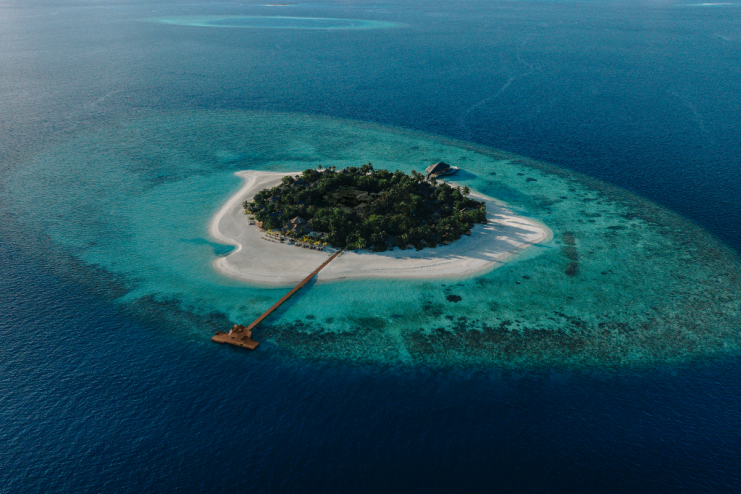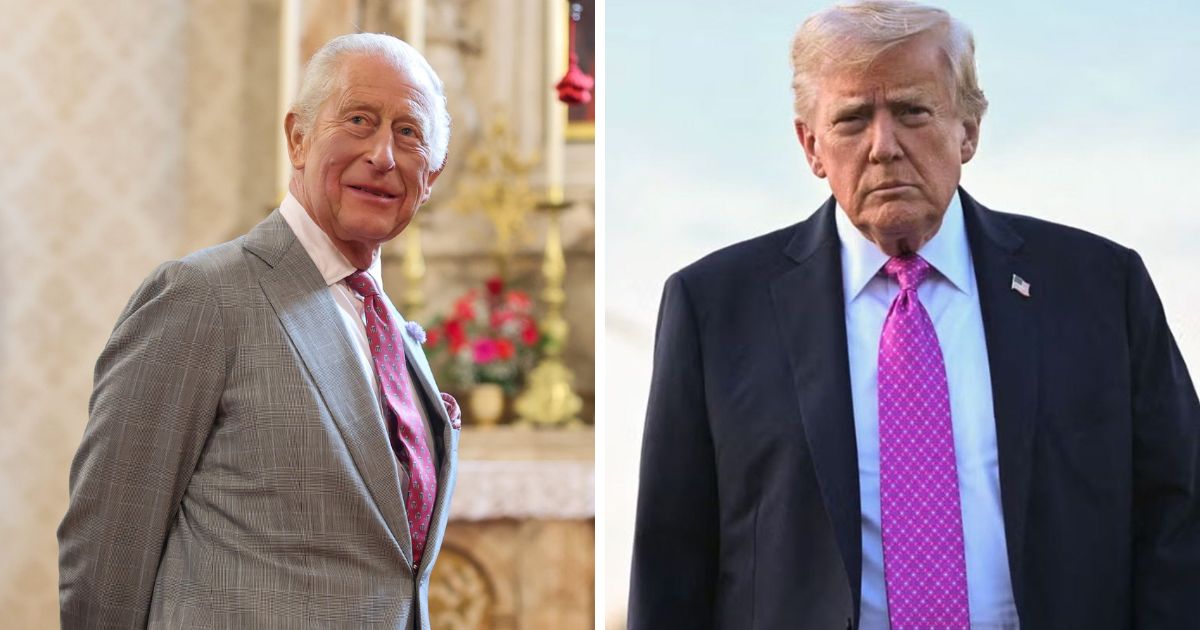By Julia Khamissa
Copyright cityam

We all do the same thing when we arrive in paradise. Snap-happy eager beavers, scrambling to photograph the first swinging hammock, the first lopsided shell, the welcome coconut drink raised towards the sea, held out like a newborn Simba over Pride Rock. Arriving at Banyan Tree Vabbinfaru in the Maldives, you will undoubtedly do this. But you’ll quickly realise that it becomes less about showing the world that you’re here and more about actually being here.
Twenty-five minutes by speedboat from Malé, Vabbinfaru — meaning “a round island circled by a reef” — is the blueprint for postcard perfection. A ring of ivory sand, flanked by palm trees and turquoise shallows. Here, there are no overwater villas, no underwater restaurants, no LED-lit glass walkways. It feels like the closest thing to a true desert island, taking just seven minutes to walk around its edge.
Banyan Tree became the first international luxury hotel brand in the Maldives when it opened in 1995, at a time when tourism in the region was in its infancy. When the big brands moved in and began building artificial islands and cookie-cutter overwater villas, Banyan Tree chose restraint. It hasn’t engineered the wow factor; it’s inherited it. As part of their recent facelift, they invested in what was already there: preserving native vegetation, expanding conservation and wellness offerings, and refreshing their 48 land-based villas.
The Maldives hotel on a tiny island you can walk around in seven minutes
Nested in thick tropical foliage, each villa is topped with a coconut-thatch cone roof. A pull-cord bell marks the entrance, revealing a hot tub and plunge pool in your private courtyard. There’s direct access to the beach and a wooden walkway, leading to your yoga pergola – ideal for watching sunrise or sunset, depending on which side of the island you land. The bamboo-fringed, open-sided bathrooms come with Japanese TOTO toilets.
You may love or loathe the alfresco set-up but rest assured: the Maldives has remarkably few creepy crawlies. And yes, the heated seat still hits – even in the tropics.
The circular bedroom centres a four-poster beneath a vaulted ceiling and walls decorated by local artisans. Hery, the GM, references a textile hanging in my villa. “Handmade by one woman on a nearby island. It’ll take her six more months to finish the rest.”
Things here take time, and the slower pace defines the island. Meals follow the same ethos: unfussy but flavourful. Try the national dish of mas huni, a refreshing bowl of tuna, shredded coconut, chilli, onion and lime.
The Banyan Tree Spa lives up to the brand’s reputation for Eastern holistic traditions and intuitive treatments, with therapists undergoing formal training at the flagship training academy in Phuket. On a silvery, overcast morning, I drift off during a massage and wake up feeling entirely rewired.
One activity sees guests walk mindfully across the island to foster emotional connection and present-moment awareness
Banyan Tree is the home of Thai massage, but they’re evolving alongside the wellness scene, with new additions like guided floating lagoon therapy, yoga, and ‘conscious grounding,” an activity in which guests walk slowly and mindfully across the island to “foster emotional connection and present-moment awareness.” The Banyan Tree also run ad-hoc wellness retreats throughout the year as well as a programme of events to help guests engage with local cultures. Maldivian wellness programmes are popular; one of the best is at the Joali Being property, built on four pillars of mind, skin, microbiome and energy.
The resort offerings can, at first glance, feel contradictory. On the quieter side of the island sits Madi Hiyaa, a slightly incongruous, striking overwater Japanese restaurant. Built at the tip of an existing pier, and shaped like a stingray, this bioclimatic bamboo structure was designed by Dutch studio Atelier Nomadic and inspired by the Dhivehi language, where Madi signifies “ray”, and Hiyaa “shelter.” It has a luxe two-tier infinity pool surrounded by net hammocks to enjoy sushi, flame-grilled yakitori, and yuzu crème brûlée.
On the other side, the newly refurbed and delightfully unpretentious marine lab: painted seafoam blue and kitted out with microscopes and whiteboards like a school classroom. It’s a bit of a mishmash, but in the Maldives, where you commit to a single island, a little variety can only be a good thing. Like at Raaya by Atmosphere and countless other Maldivian properties, it’s all inclusive, meaning you can leave your wallet in the room for the duration of the trip and just enjoy the indulgences of food around-the-clock. Internationally acclaimed chefs and sommeliers are increasingly going to the Maldives to work on passion projects, like at the Ozen properties where they’re currently ageing wine under the water in sand.
Did you know that coral is an animal? Neither did I – until Nick from Watford taught me. He’s the resort’s resident marine biologist and has the kind of job that makes you wish you’d paid more attention in science lessons. He runs the lab, the first of its kind in the Maldives when it launched in 2004. A pioneering move at the time, since then, other high-end resorts have followed suit, establishing their own marine centres and recognising that ecological engagement is integral to the Maldives experience. Here, guests can participate in coral planting workshops, turtle rehabilitation, and join citizen science snorkels, where you’re not just floating around pretending to be useful, but contributing to real scientific research by helping collect data on species diversity and reef health.
One afternoon, we set out on the Kahan’bu catamaran to a sandbank in the North Malé Atoll.Just metres from the shoreline, the seabed comes to life with the most astonishing coral – staghorns, bulbous brains, and fanned plates in ultraviolet purple, mango orange and fuchsia. A maze of micro-architecture, of branching, blooming, breathing structures, patrolled by clownfish, darting through the anemones like airborne traffic wardens. I survey their little world until my fingers wrinkle, and someone has to come fetch me, tapping their wristwatch underwater to remind me about my next appointment.
It’s not just the reefs they’re trying to protect. The resort’s sustainability efforts run deep: solar panels power each villa, drinking water is desalinated on-site, and single-use plastics are banned.Hery tells me about the supply boat that recently damaged part of the house reef, leaving the staff devastated. When so much effort goes into preservation, careless accidents feel like vandalism. Many of the team – including Chika, the Experience Manager – have been here since day one. They share their local knowledge: how to read the sky before a storm, how to tie a sarong, and which island remedies help with jet lag.
They also explain why the sand here stays cool and doesn’t stick between your toes. It’s not made from stone, but from coral – crushed, digested and excreted by parrotfish, colourful reef grazers whose endless nibbling produces soft, powdery sand. This phenomenon shapes many tropical islands around the world, from Hawaii to French Polynesia. It’s like walking on sifted flour. I came with five pairs of shoes and wore none of them.
Few places are as mythologised as the Maldives. We rehearse it in our minds long before we arrive. But somewhere along the way, we forgot that these islands aren’t just the luminous seas and blue skies of a Windows screensaver, they also have a story. When boarding at Heathrow, I’d received a message from my dad. “It used to be a hardship post. RAF Gan. No tourism. A year’s posting!” That version of the Maldives, stripped-back and spartan, is hard to reconcile with the airbrushed version we scroll through today. I’d sat next to Penny on the plane, a British diver who’s been coming since the 70s, and who shares with me the old lore of the islands.
Before scented towels and chilled champagne flutes, and some of the best service I’ve ever received, it was saltwater showers and candlelit fish suppers on islands that had never known electricity, let alone air con. The first tourists were backpackers and drifting hippies, peeling off from the psychedelic haze of Goa or the guesthouses of Colombo. Malé, then reachable only via Sri Lanka, was their next frontier.
The pivot to honeymoon cliché in only a few decades is surely part of the intrigue. Banyan Tree keeps that door to discovery ajar – caught somewhere between the old and new Maldives, reminding us that these islands were here long before we decided they looked good on camera.
Visit the Maldives yourself
An Oceanview Pool Villa at Banyan Tree Vabbinfaru starts from £736 per night based on two people sharing, inclusive of airport transfers, breakfast, taxes and fees. Visit banyantree.com /maldives/ vabbinfaru



